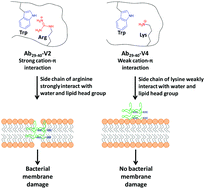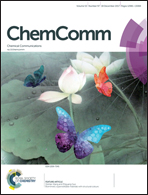A short non-cytotoxic antimicrobial peptide designed from Aβ29-40 adopts a nanostructure and shows in vivo anti-endotoxin activity†
Abstract
Aβ29-40 residues with tryptophan in place of the lone methionine residue and three arginine residues added to its C-terminus exhibited augmented antibacterial activities and protected mice against a lethal dose of LPS. The results show the conversion of a Aβ29-40 segment into a cell-selective antimicrobial/anti-endotoxin peptide with nanostructure and cation–π interaction.



 Please wait while we load your content...
Please wait while we load your content...